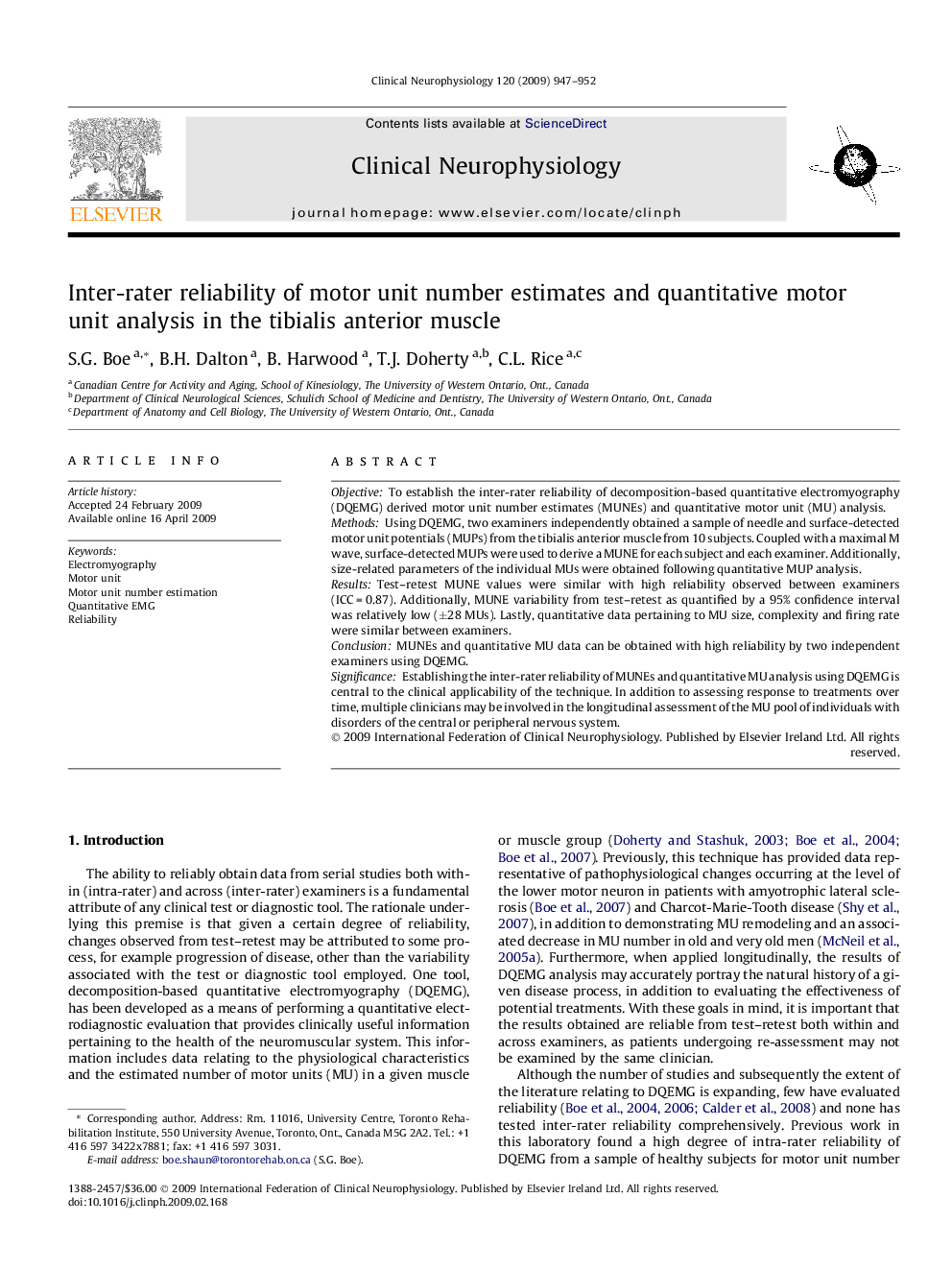| Article ID | Journal | Published Year | Pages | File Type |
|---|---|---|---|---|
| 3046052 | Clinical Neurophysiology | 2009 | 6 Pages |
ObjectiveTo establish the inter-rater reliability of decomposition-based quantitative electromyography (DQEMG) derived motor unit number estimates (MUNEs) and quantitative motor unit (MU) analysis.MethodsUsing DQEMG, two examiners independently obtained a sample of needle and surface-detected motor unit potentials (MUPs) from the tibialis anterior muscle from 10 subjects. Coupled with a maximal M wave, surface-detected MUPs were used to derive a MUNE for each subject and each examiner. Additionally, size-related parameters of the individual MUs were obtained following quantitative MUP analysis.ResultsTest–retest MUNE values were similar with high reliability observed between examiners (ICC = 0.87). Additionally, MUNE variability from test–retest as quantified by a 95% confidence interval was relatively low (±28±28 MUs). Lastly, quantitative data pertaining to MU size, complexity and firing rate were similar between examiners.ConclusionMUNEs and quantitative MU data can be obtained with high reliability by two independent examiners using DQEMG.SignificanceEstablishing the inter-rater reliability of MUNEs and quantitative MU analysis using DQEMG is central to the clinical applicability of the technique. In addition to assessing response to treatments over time, multiple clinicians may be involved in the longitudinal assessment of the MU pool of individuals with disorders of the central or peripheral nervous system.
